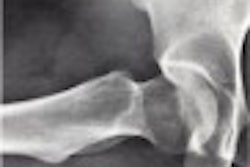ANAHEIM - A thorough project post-mortem is more than a review of what went right and what went wrong. Done properly, a retrospective analysis can be a great learning experience.
For Debby Platt, operations director at Great Basin Imaging in Carson City, NV, a number of important lessons have been learned the hard way. A joint venture imaging center agreement that had been in place for several years between a local hospital and her radiology group was recently, and abruptly, terminated, because of new hospital ownership. Then the lease to her group’s freestanding center was canceled by the hospital, complete with an eviction notice.
And finally, Platt was informed that access to the shared RIS between the hospital and the radiologists had been shut down -- the day before her arrival to speak at the American Healthcare Radiology Administrators (AHRA) conference on Sunday. Platt said she received a CD of ASCII, comma-delimited files representing all of the patient data accrued by the radiology practice for the duration of the joint venture.
"The thing I’ve learned from this experience is that you should design all contracts with the worst-case scenario in mind. You want to meticulously detail all aspects of partnership dissolution," Platt said.
In spite of all this turmoil, Platt didn’t dwell on Great Basin’s misfortunes. Instead, she offered audience members a crash course in forging ironclad contracts, and creating detailed project punch lists, before even breaking ground on a freestanding imaging center.
Build out
Over the course of a year, Great Basin Imaging had partnered with other area professional groups for ownership of a medical office building. The three-story facility was being built from the ground up, and brought together a range of disciplines, from physical therapy to radiology, in an equity partnership.
Partly as a result of ongoing negotiations with their hospital partner, as well as to meet pre-planned project deadlines, the group was on a fast track to build out its imaging center.
"Selection is one of the biggest factors for the success of the venture," Platt said. "You need to have the right equipment, architect, designer, contractor, owner’s representative, financing, and project manager."
Equipment
Great Basin Imaging elected to go with a sole-source vendor for its equipment imaging needs. On the basis of her experience, Platt recommended a number of items that a facility should include in its contract with an equipment vendor. First and foremost, an imaging center should insist that a manufacturer’s equipment installers be part of the design process early on.
"It’s critical that the installers be on-site before something as mundane as outlets are set in the walls. Although the vendor’s project managers are very helpful, it’s the installers who actually have the hands-on experience setting up the modalities. As we found out, if they’re not there during the design and construction, it’s very expensive to rewire, rebuild, or replumb to meet equipment-specific needs," she said.
In the contract, the manufacturer should quote all available equipment peripherals and options, such as CT injectors. Also, a discount, if available, on future purchases should be documented in the contract.
Delivery dates and matters of financial responsibility on delivery should be reviewed with a fine-tooth comb, said Platt.
"If you’re required to pay 80% of the total amount due on delivery, and the vendor starts staging the equipment in a nearby warehouse, are you obligated to make payment at that time? Also, are you going to be charged warehouse fees? These are items that must be spelled out in advance," she advised.
Platt advocated creating a flow chart to depict the flow of information from the RIS to the PACS to the modalities, and back, and said it should be documented and guaranteed with payment penalties by each vendor in the center.
"We learned the hard way that if penalties are not included in the initial contract, that you will have to absorb the costs of delays from any part of the supply chain. This includes the equipment vendor, the IT vendor, the architect, the designer, and the contractor," she said.
Building and design
When selecting an architect, designer, and a contractor, the imaging center should look for professionals who have worked on prior imaging projects. Radiology has unique needs such as magnetic and radiation shielding, cryogenics, plumbing, cooling, electrical, lighting, and insulation requirements that are vastly different from other medical installations.
Platt also supported the hiring of an owner’s representative, a contractor hired to advocate for the owner’s needs with the general contractor during construction of the facility.
"The cost for an owner’s representative would have been approximately $60,000 for our project. Hiring one will save you hundreds of thousands of dollars over the course of a project," she said.
Never accept a boilerplate, or standard, contract from the contractor, the architect, or the designer," she warned. A specific line item to include in all contracts is that a bid is considered final when accepted and that any change orders will be at the cost of the bid recipient.
"Delivery penalties must be included in your design contracts," she said. "These should include penalties not only for building readiness dates, but also final plan delivery dates from the equipment vendor, architect, designer, contractor, and all subcontractors."
Penalties should also be contractually spelled out for items such as a written response time for requests for changes or requests for information. Regular meeting dates and times, with minutes, for all parties involved in the construction of the center should be documented; and penalties should be imposed for failure to attend scheduled meetings.
Each contract should define who is responsible for what and when they are responsible for it, as well as spelling out the consequences of failing to meet those responsibilities.
According to Platt, financial disincentives are a strong motivator for communication among the various professions involved in building an imaging center, as well as for its on-time completion.
Opening day
One lesson Platt learned through her experience with Great Basin Imaging is that marketing the new facility should take place at least six months from the opening day of the imaging center.
"We started three months out and still had physicians sending the patients to our old address," she said.
Collateral materials such as order pads with the new phone numbers and address and maps to the new facility should be hand-delivered at least a week before opening to each referring physician’s office within a group’s catchment area.
Schedule the first three weeks of the facility’s opening well in advance and try to keep it as light as possible, she said. Ensure that all staff is available by requiring that no vacations be taken during the three-week shakedown period.
"Be sure to work staff meetings into the block schedule. We didn’t, and ended up bringing people together late in the evening or asking them to show up early in the morning before we opened. And that wasn’t the best idea on top of the stress of opening a new center," observed Platt.
If new equipment and systems are being installed, be sure to schedule adequate time for training. Learning as you go may be possible, but it’s hardly optimal, Platt said. Also, chart the patient flow in the facility for the technologists and have a chart by each modality station.
For the first few days of a facility’s opening, Platt encourages that it require onsite vendor support for its modalities and IT systems.
"This is important enough that it should be spelled out in your contracts with your vendors. An administrator will have enough fires to put out during the first week or so without having to wonder when technical support for the RIS or the PACS or the CT or MR machine is going to arrive," she said.
A seemingly minor, but very practical piece of advice Platt shared was that housekeeping services be scheduled for the night before the opening date of the facility. Last-minute moving and setup means the place will need to be tidied up. Running a vacuum and duster around the facility at midnight is not the best use of an administrator’s time, she said.
By Jonathan S. BatchelorAuntMinnie.com staff writer
August 12, 2003
Related Reading
Latest ACR data shows solo radiologists, small practice groups remain viable, July 29, 2003
Financial modeling assesses viability of imaging center venture, July 14, 2003
Referral analysis offers clues to lackluster PET utilization, June 22, 2003
CT screening centers: Is there a right way to start one?, November 12, 2002
Copyright © 2003 AuntMinnie.com



















